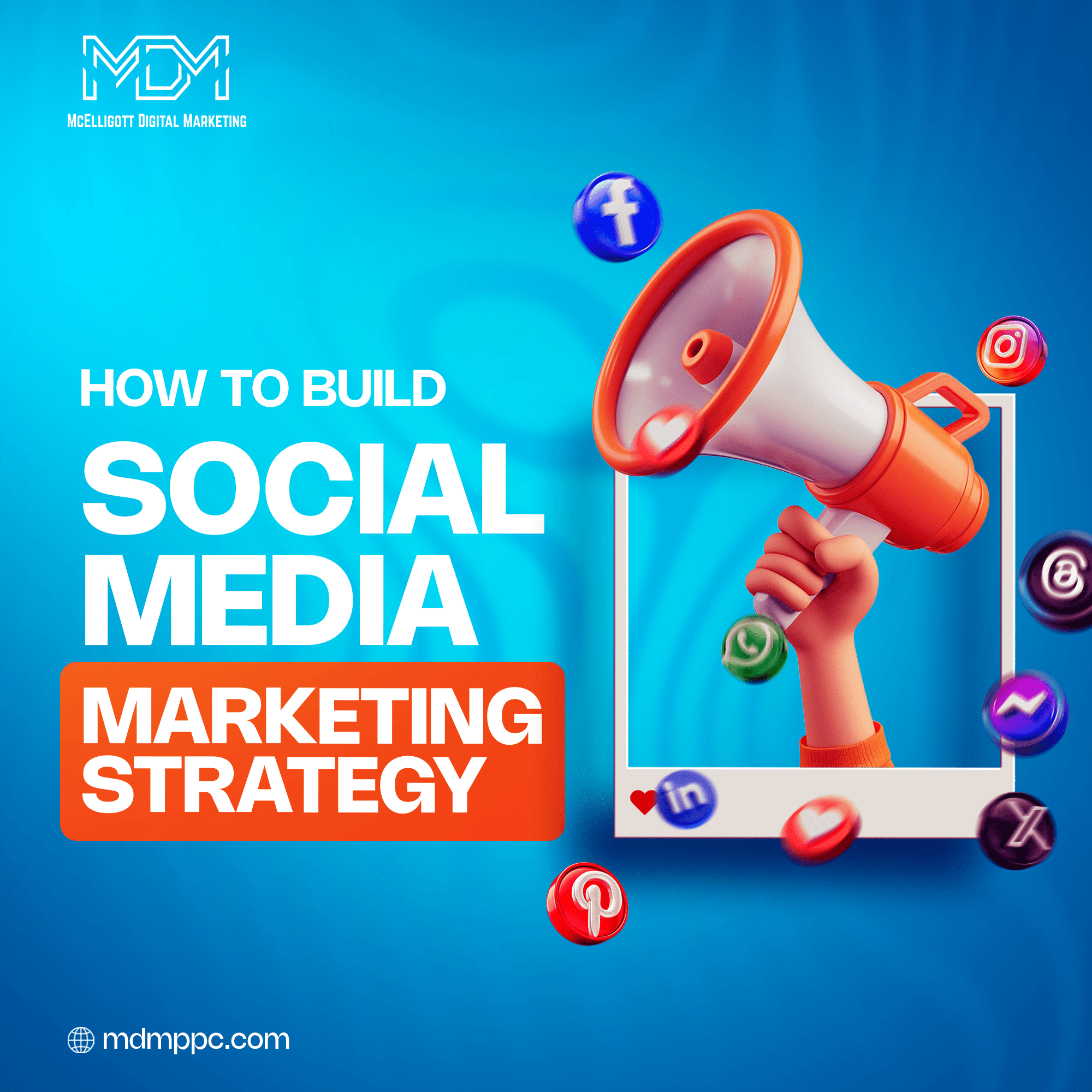Email marketing is still the most powerful go-to marketing channel for most businesses. And the reason is the ROI and results email marketing brings.
An email marketing strategy empowers you to speak directly to your leads, prospects, and existing customers. Unlike the other marketing channels where the message gets lost, email marketing takes you directly to your target audience’s inbox.
Apart from the sales, email marketing helps you build a solid relationship with your customers in the long term. You can engage your audience the way you want, entertain them, inform them, or even talk about your products and launches.
But to get the best results, you need to have a good email marketing strategy. By good, we mean a strategy that is chalked out, advisable, tried and has been working for others in your industry.
In this blog, we’ll discuss email marketing strategies to make powerful campaigns and get better results.
What does having an email marketing strategy mean?
An email marketing strategy is a step-by-step plan that helps businesses use email to connect with customers. It involves creating and sending emails to subscribers to meet specific goals. These goals may include increasing brand awareness, bringing more visitors to a website, attracting potential customers, and boosting sales.
Every business needs an email marketing strategy. One of the benefits of email marketing is that it helps marketers plan how to reach the right audience with the right message. A good strategy also helps businesses understand their customers better. It shows what customers like, what they need, and what problems they face.
With this information, businesses can organize their email list into different groups. These groups can be based on customer interests, past purchases, or where they are in the buying process. This makes emails more relevant, personal, and timely.
Top 10 successful email marketing strategies
1. Define audience and clean mailing list
No matter what you sell, it is important to know your audience. This helps you communicate with them in the best way. Organize your audience into smaller groups. This way, you can send emails that are more personal and relevant. It helps increase engagement, build trust, and improve your results.
Cleaning your email list means removing contacts who are no longer interested. This includes people who have unsubscribed or have not engaged for a long time.
A clean list improves your email success. Removing inactive contacts, bounced emails, and spam complaints keeps your list high quality. This also helps your emails reach the right people and protects your sender’s reputation.
Also read: How to improve your bounce rates?
2. Feature user-generated content
User-generated content (UGC) is a great way to make more people aware of your brand. When customers see others enjoying your products, they become curious and want to learn more.
Adding customer photos, videos, reviews, and stories to your emails helps build a sense of community. It also makes people more likely to click on your emails. Studies show that 79% of consumers are influenced by UGC when deciding to buy something.
If you don’t have enough user-generated content, try starting a hashtag campaign. Ask customers to tag your brand on social media when sharing posts about your products. This helps spread the word and makes it easy to collect UGC in one place.
Besides increasing clicks and sales, UGC helps create a strong brand community. It allows you to connect with customers in a more personal way.
3. Spend time on subject lines
Your subject line is the first thing people see. It should grab their attention. About 35% of people open emails just because of the subject line. If it’s not interesting, they might ignore your email.
A good subject line is important. It can decide whether people click on your email or skip it.
There is a lot of competition in email inboxes. People receive many marketing emails every week. Your email should stand out but not feel too promotional.
Follow these simple tips-
- Keep the subject line short—50 to 60 characters.
- Use strong action words.
- Give a hint about what’s inside the email.
- Add the person’s name to make it feel personal.
4. Email personalization
Personalizing emails does not mean writing a separate email for each person. It means using customer data to make emails more relevant.
Amazon is a great example of this. Instead of saying “Dear Customer,” they use the person’s name. Their product recommendations are based on past purchases, not random choices. This makes emails more useful and engaging.
Personalized emails work better. Studies show they lead to six times more sales. Adding a person’s name to the subject line can increase open rates by 10-14%. Since nearly half of people open emails because of the subject line, this small change makes a big difference.
Yet, 70% of brands do not use personalization. This gives you a chance to stand out. Simple steps can help, like using a real reply-to address and adding a proper email signature. Collecting the right data also helps you send better, more effective emails.
Also read: How to overcome low conversion rates?
5. Provide value to your subscribers
Giving value to your subscribers is important for email marketing. If your emails are helpful, people will open and read them more often. They may even look forward to your messages.
But what does “providing value” mean?
Think about what your customers need. Then, create emails that help them. For example, if you sell clothes online, customers may struggle with choosing the right size. You can send emails with shopping tips or a custom-size finder to solve this problem.
Sharing promotions and product updates is good, but customers expect them. To truly add value, ask your subscribers what they want. You can-
- Let new subscribers pick their favorite topics when signing up.
- Ask current customers what content they prefer.
- Invite subscribers to reply with feedback.
Also, make sure your emails are easy to read. Use mobile-friendly designs and simple fonts. This helps all subscribers enjoy your content.
6. Audience segmentation
Email segmentation is one of the top priorities for marketers. But why is it so important?
The reason is simple. When you divide your email list into smaller groups, your messages become more relevant. This makes your emails more effective and increases engagement.
This is how segmentation works. Imagine you are hosting a networking event for small business owners within 20 miles. Instead of emailing your entire contact list, you create a segment of small business owners in that area. Then, you send them a personalized invite. This makes it more likely that they will attend.
Now, think about getting an email invite for an event in another country. It would be frustrating, right? Sending emails to the wrong audience annoys subscribers and lowers engagement.
Benefits of segmentation
Studies show that segmentation improves all key email marketing results. Businesses that use segmentation see better open rates, more leads, and higher sales. Research from Campaign Monitor found that segmented campaigns can increase revenue by 760%.
Segmentation also helps with GDPR (General Data Protection Regulation) compliance. Sending relevant content reduces spam complaints and keeps your emails welcome in inboxes.
Here are a few simple ways to segment your list.
- By industry– If you sell to both businesses and individuals, segment by industry. A car parts supplier should send different emails to mechanics than to software companies.
- By company size– A company with five employees is not supposed to be ready for a major industry event. A larger company with 750 employees might be interested.
- By sales cycle– New buyers prefer helpful guides and research. Customers ready to buy respond better to product demos or free trials.
Segmentation makes your emails more useful, improves engagement, and helps grow your business.
7. Optimize your calls-to-action
Your call-to-action (CTA) is important. It helps get more people to click on your email. A weak CTA means fewer clicks. This leads to fewer visitors and fewer sales. That’s why your CTA should be strong and clear.
Here are some easy ways to make your CTA more effective:
- Use action words– Start with verbs like “Shop,” “Buy,” or “Download.” These words encourage action.
- Create urgency– Make people act quickly. Say things like “Grab your seat – only 5 spots left!”
- Give a reason to click– Offer a benefit. For example, “Buy now to get 50% off.”
- Make it emotional– Use words that excite or connect with your readers.
Your CTA should tell people what to expect. If you are promoting a new product, don’t just say “Click here.” Instead, say “Explore our summer collection.” Also, make sure the link takes them directly to that page.
A good CTA gets more clicks and leads to better results. Take time to make it strong!
8. Return to inactive audience
Sometimes, people stop opening your emails. This can happen for many reasons. But bringing them back is always a smart move.
Getting an old customer to buy again is easier than finding a new one. It also costs much less. Getting a new customer can cost five times more than keeping an old one. That’s why re-engaging your subscribers is so important.
Want to bring back inactive subscribers? Try these ideas.
- Remind them about your business– Show them why they signed up in the first place.
- Offer a special deal– Discounts and exclusive offers grab attention.
- Share something new– Highlight new products, blog posts, or updates.
- Ask a question– Invite them to reply and start a conversation.
- Use special dates– Send emails on birthdays or holidays to reconnect.
A good re-engagement email can turn inactive subscribers into active customers again.
9. Design your emails and choose how often to send
Creating a good email takes both creativity and strategy. The way your email looks matters. Fonts, colors, text size, and layout help it stand out in a crowded inbox. That’s why it’s worth spending time on design.
You also need to decide how often to send emails. Some emails, like automated messages, go out when a customer takes action. Others, like newsletters and promotions, follow a set schedule. This schedule may change depending on the time of year.
To find the right timing, test different schedules. Try sending emails weekly, every two weeks, or monthly. Watch how people respond.
If many people unsubscribe, you may be sending too often. If engagement is high, you can send more emails.
The key is to keep your audience interested without overwhelming them.
10. A/B test your email campaigns
A/B testing, or split testing, helps you find out what works best in your emails. You can compare different subject lines, content, or designs to see what your audience likes more.
Each test gives you useful information for future emails. Here are some examples:
If emails with questions in the subject line get more open, use more questions. If adding emojis increases clicks, try using them more often.
You can test different parts of your email, such as
- Subject lines
- Email text
- Call-to-action (CTA) buttons
- Design and layout
- Links inside the email
- Best time to send
- Types of content
For the best results, test only one thing at a time. This way, you’ll know exactly what makes a difference. Also, try different content types like blog posts, videos, or case studies to keep your emails interesting.
Conclusion
These email marketing strategies you went through, however, powerful, are not still exclusive.
It is important to track how many people open your emails and click on links. But these are just the basics.
Pay attention to unsubscribe rates, bounce rates, and cart abandonment rates. These numbers help you understand what is working and what needs to change.
McElligott Digital Marketing can help you craft email campaigns that align with your overall marketing goals.
We offer targeted direct mail marketing to boost your sales. With 10–30x higher response rates than digital ads, our secure and cost-effective approach turns website visitors into loyal customers.
Contact us today to start your targeted direct mail campaign
Email marketing strategy FAQs
1. Why is an email marketing strategy important?
A strong email marketing strategy helps create content that connects with your audience. It encourages them to engage with your brand and eventually make a purchase. Understanding your audience allows you to group them based on their behavior and interests.
2. How to create an email marketing plan?
Start by reviewing your current emails and learning about your audience. Set clear goals for engagement and revenue. Focus on writing good content and designing visually appealing emails. Test different approaches and make changes based on how your audience responds.
3. What are the best practices for email marketing?
To succeed, research your audience, segment your email list, write clear and engaging content, keep your email list updated, and use A/B testing to improve results over time.





